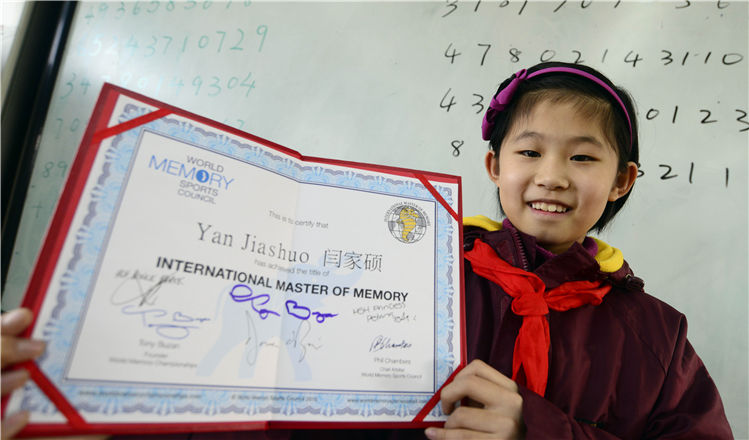Blueprints for greater success in the future
Updated: 2015-12-26 05:12
By WANG YING in Shanghai(China Daily USA)
|
||||||||
During the 13th Five-Year Plan (2016-2020) period, Shanghai will introduce reforms that will affect numerous industries to improve the livelihoods of people. Here are some of the plans that leaders in respective sectors will be implementing, according to a series of online talks by Shanghai-based news portal eastday.com.
Technology and fashion
Shanghai’s textile industry has a history of more than 150 years and it used to be known as the city’s key industry. During its peak, the city’s cotton and textile output accounted for 47.23 percent of the nation’s total.
By combining technology with fashion, Shangtex Holding Co Ltd is gearing up to become the nation’s largest multinational group in textile and attire trade in the next three to five years, with its core business centering on fashion, said the company’s president Zhu Yong.
“The ‘Made in China Strategy 2025’ initiative offers an opportunity for the textile industry to make good use of the internet and information technology,” said Zhu.
After more than 40 years of exploration in raw material innovation, the group has successfully combined tech with fashion in a green fiber project that has an annual capacity of 1,000 tons. The fiber uses bamboo as raw material to produce an environmentally friendly product.
According to Zhu, the group is now looking to provide tailor-made services to consumers. “Made-to-order clothes do not have to be expensive, and Shangtex is dedicated to making such services affordable in the future,” said Zhu.
After decades of development, Shangtex now produces 60 percent of China’s automobile floor mats and more than half of the nation’s automobile safety belts. At the moment, more than 80 percent of the company’s business is in international trading related to textile and clothes.
The group is also aware of its limits in building influential brands. Apart from underwear brand Three Guns, Shangtex’s other brands, including apparel brand Conch, are limited in exposure to the global scene.
“We will gradually increase our attire and clothes brands, but it will take time,” said Zhu.
Fresh food and e-commerce
Since launching an online store for fresh food, vegetables and fruits in February, Bright Food (Group) Co Ltd has attracted more than 600,000 registered users, and their revenue reached 66 million yuan as of late November.
According to Dong Qin, president of this Shanghai-based food corporation, e-commerce will be key for the company’s development in the next few years. “Bright Food will strive to leverage the Internet to combine the primary, secondary and tertiary industries,” he said.
Another of their strategies involves the acquisition of international brands, something Bright Food has done over the last few years. In November 2012, it completed the acquisition of British food processing company Weetabix Ltd for about 700 million pounds ($1.05 billion), which was the biggest overseas M&A deal for a Chinese company then. In 2014, the company acquired a majority stake in an Israeli counterpart Tnuva, and bought a majority stake in Italian olive oil producer Salov Group. In September this year, the group purchased Spain’s second-largest food distributor Miquel Alimentacio Grup for 110 million euros ($120 million).
“This will be only the beginning,” said Chen Yongming, a professor from the Shanghai Administration Institute. According to Chen, Bright Food will raise the proportion of its overseas assets from the current 15 percent to 25 percent in the next three years, and the company is very likely to become a Fortune 500 enterprise by next year.
“Although China is known as the world’s factory, we will strive to begin exporting our very own brands in the future,” said Dong.
According to him, Bright Food will not only bring good products to domestic consumers, but also import advanced technology and management to improve the Chinese market.
- More aid from China set for Syria
- Japanese journalist reportedly being held in Syria
- New York City has warmest Christmas Eve on record
- One dead as fight leads to fatal shooting at North Carolina mall
- Trump's lead bodes well for Hillary Clinton's presidential bid
- Spanish Socialist leader insists no support for Rajoy

 China's top scientific achievements in 2015
China's top scientific achievements in 2015
 Yearend 2015: A picture and its story
Yearend 2015: A picture and its story
 Christmas celebrated across the world
Christmas celebrated across the world
 HK car show kicks off during Christmas season
HK car show kicks off during Christmas season
 10 major economic policies that will make a difference on lives
10 major economic policies that will make a difference on lives
 Santa Claus is busy in China
Santa Claus is busy in China
 Yearend 2015: Heartstopping images captured by daredevils
Yearend 2015: Heartstopping images captured by daredevils
 Girl becomes youngest Master of Memory
Girl becomes youngest Master of Memory
Most Viewed
Editor's Picks

|

|

|

|

|

|
Today's Top News
Shooting rampage at US social services agency leaves 14 dead
Chinese bargain hunters are changing the retail game
Chinese president arrives in Turkey for G20 summit
Islamic State claims responsibility for Paris attacks
Obama, Netanyahu at White House seek to mend US-Israel ties
China, not Canada, is top US trade partner
Tu first Chinese to win Nobel Prize in Medicine
Huntsman says Sino-US relationship needs common goals
US Weekly

|

|









